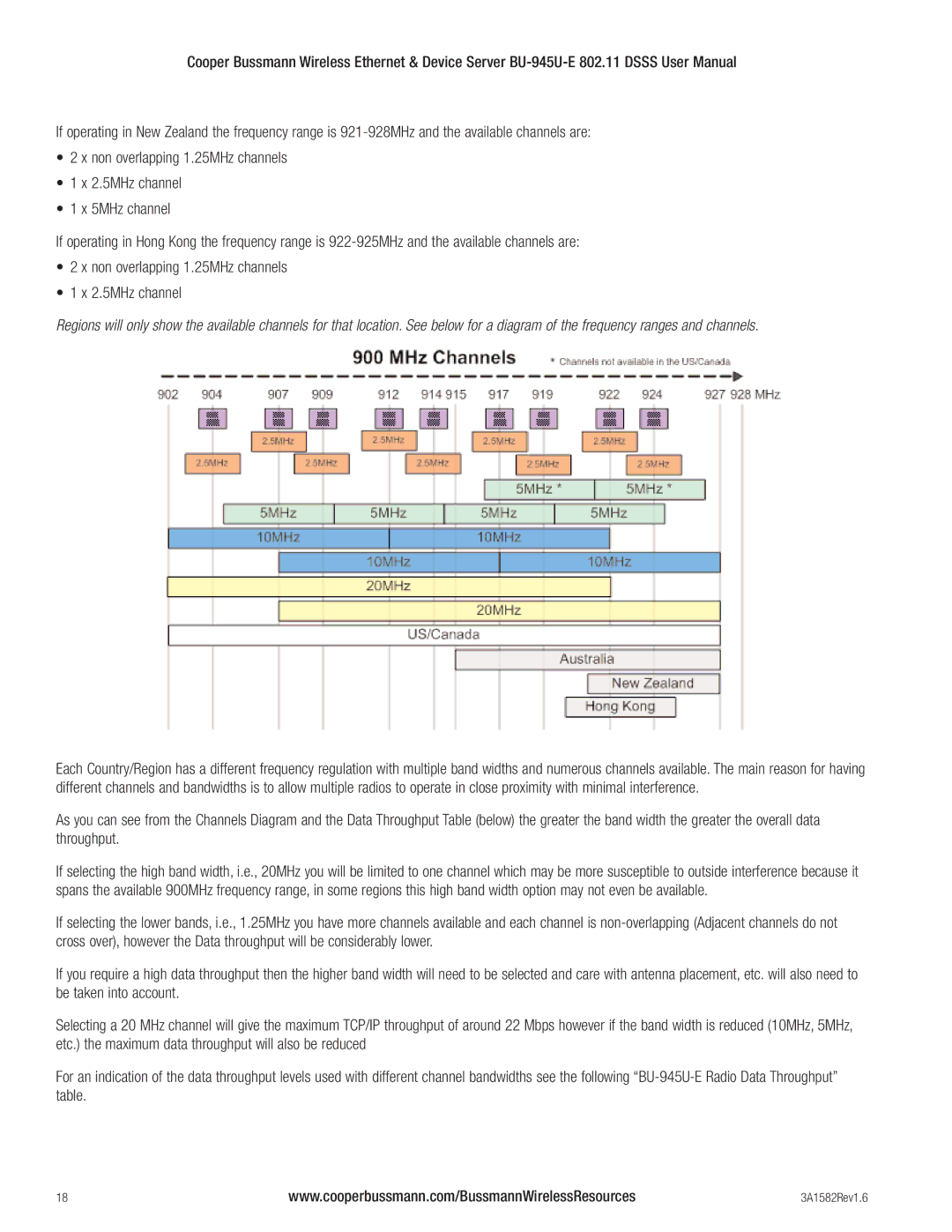
Cooper Bussmann Wireless Ethernet & Device Server
If operating in New Zealand the frequency range is
•2 x non overlapping 1.25MHz channels
•1 x 2.5MHz channel
•1 x 5MHz channel
If operating in Hong Kong the frequency range is
•2 x non overlapping 1.25MHz channels
•1 x 2.5MHz channel
Regions will only show the available channels for that location. See below for a diagram of the frequency ranges and channels.
Each Country/Region has a different frequency regulation with multiple band widths and numerous channels available. The main reason for having different channels and bandwidths is to allow multiple radios to operate in close proximity with minimal interference.
As you can see from the Channels Diagram and the Data Throughput Table (below) the greater the band width the greater the overall data throughput.
If selecting the high band width, i.e., 20MHz you will be limited to one channel which may be more susceptible to outside interference because it spans the available 900MHz frequency range, in some regions this high band width option may not even be available.
If selecting the lower bands, i.e., 1.25MHz you have more channels available and each channel is
If you require a high data throughput then the higher band width will need to be selected and care with antenna placement, etc. will also need to be taken into account.
Selecting a 20 MHz channel will give the maximum TCP/IP throughput of around 22 Mbps however if the band width is reduced (10MHz, 5MHz, etc.) the maximum data throughput will also be reduced
For an indication of the data throughput levels used with different channel bandwidths see the following
18 | www.cooperbussmann.com/BussmannWirelessResources | 3A1582Rev1.6 |
